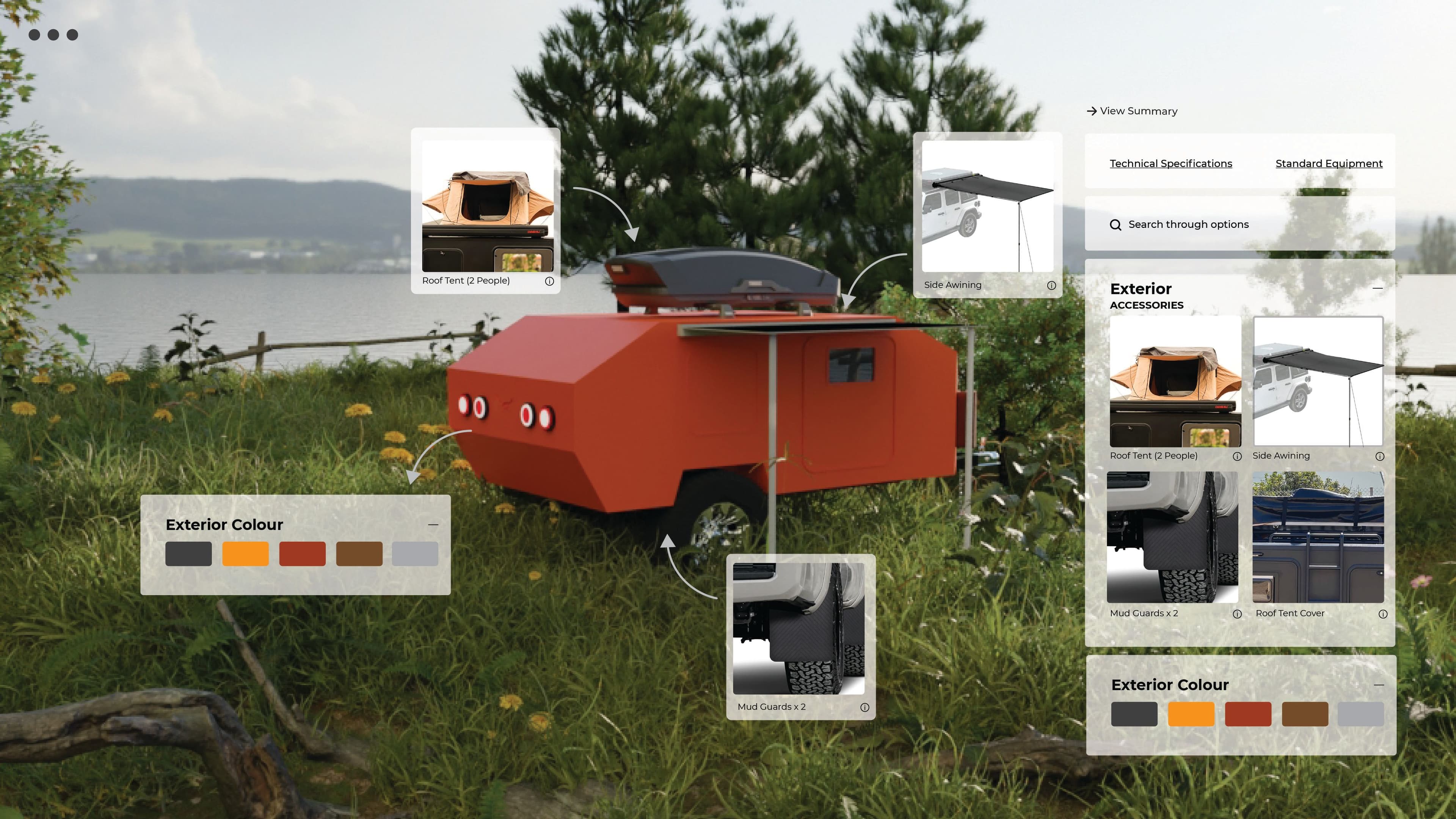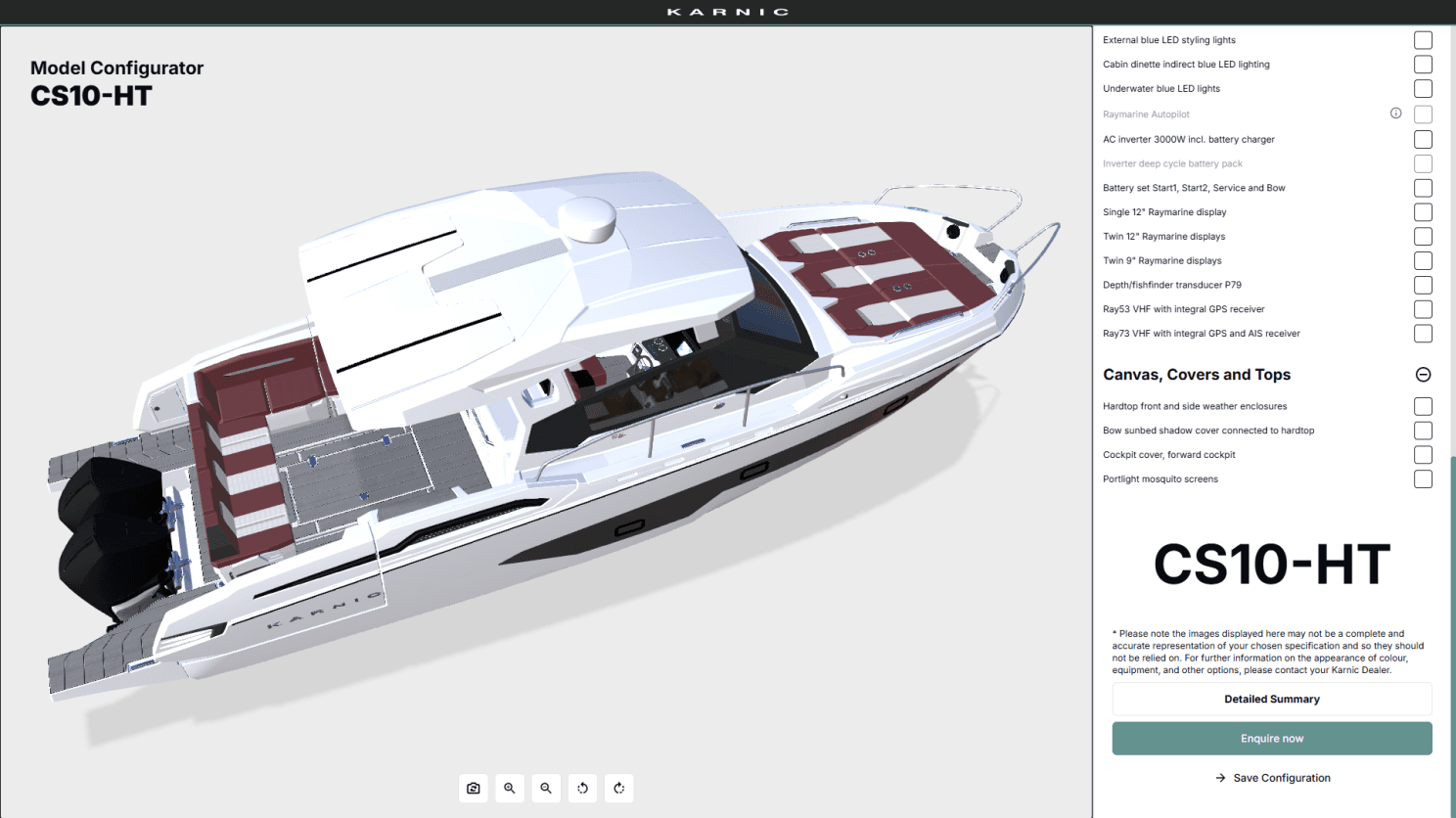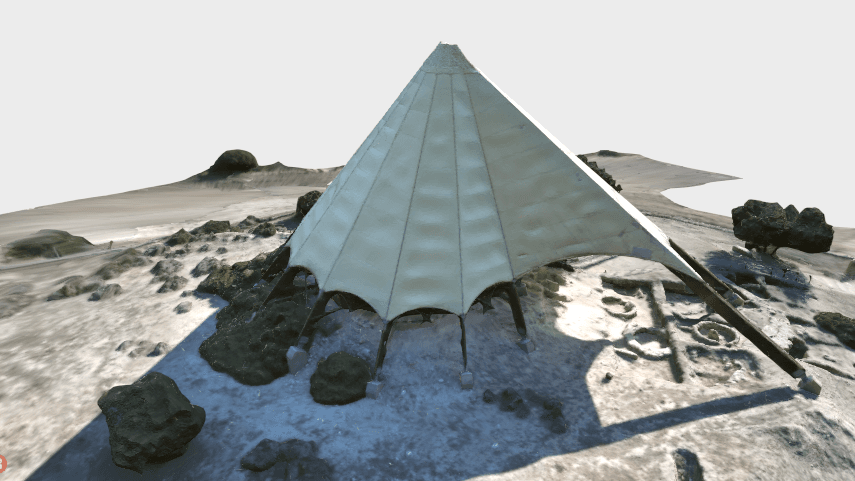The AI Revolution

Harry Collin
CTO
May 12, 2025
3D configurators have transformed the way customers interact with products online—allowing real-time visualization of customizations in everything from cars and furniture to yachts and sneakers.

Introduction
3D configurators have transformed the way customers interact with products online—allowing real-time visualisation of customisations in everything from cars and furniture to yachts and sneakers. But as expectations rise for more intuitive, intelligent, and personalised experiences, artificial intelligence (AI) is emerging as the next leap forward in 3D configurator technology.
In this post, we’ll explore how AI is enhancing 3D configurators, from guided selling to intelligent performance optimisation, and what this means for businesses and customers alike.
1. Smarter Recommendations Through AI
Traditional 3D configurators rely on fixed rules and logic trees to define which combinations of options are allowed. But AI—particularly machine learning—can analyse vast amounts of user behaviour data to suggest configurations that match user preferences or past trends.
Example:
An AI-powered furniture configurator can learn that users who choose walnut finishes often pair them with leather upholstery. Over time, it begins surfacing popular or complementary choices, streamlining the user journey.
2. Natural Language Interfaces and Chatbots
By integrating large language models like GPT, configurators can offer natural language support. Instead of clicking through menus, users can type or speak:
"Show me a sports car with a red interior and black rims."
This reduces friction, making customisation accessible even for non-technical users.
4. Generative AI for Asset Creation
Instead of manually modelling every possible option, AI tools like generative adversarial networks (GANs) or text-to-3D models (e.g., via Sora or similar systems) can create visual variants from prompts.
Use Case:
A fashion brand can generate new fabric patterns and textures automatically, enabling a constantly evolving catalog without weeks of manual work.
3. AI-Assisted Performance Optimisation
Rendering 3D models in real time, especially in web browsers, can be resource-intensive. AI helps optimise this process by:
- Predicting visible configurations and preloading assets accordingly.
- Compressing models and textures intelligently based on context (e.g. mobile vs desktop).
- Generating lower-polygon proxies dynamically using neural networks, maintaining visual fidelity while reducing GPU load.
5. Real-Time Analytics & A/B Testing
AI can analyse how users interact with a configurator in real time—tracking drop-offs, confusion points, or popular choices. This enables on-the-fly adjustments:
- Highlighting more popular configurations.
- Reordering UI options based on engagement.
- Personalising the journey per user type (e.g. beginner vs expert).
6. Virtual Try-Ons & AR with AI
For wearables, accessories, or interior design, AI-enhanced AR allows users to see how a product looks in their space or on their body. With AI-driven occlusion, lighting estimation, and surface detection, virtual try-ons become more realistic and convincing.
Final Thoughts
AI is not just a bolt-on to 3D configurators—it’s reshaping their architecture. The result is more personalised, efficient, and scalable product customisation that delivers real business impact.
Looking Ahead:
As AI models continue to improve, expect 3D configurators to evolve into intelligent product advisors—capable of designing, recommending, and even generating product variants on the fly.
Whether you're a developer, product designer, or brand strategist, now is the time to explore how AI can elevate your 3D configurator experience.
About the author

Harry Collin
CTO
Ready to start your 3D project?
Get in touch with our team to discuss your ideas and requirements.
Start a ConversationRelated Posts

December 4, 2024
3D Configurator for Karnic Powerboats.
Studio 3DX partnered with Karnic Powerboats to launch a cutting-edge 3D configurator, giving customers the power to design, share, and enquire about their dream boats in real time.

November 27, 2024
3D Virtual Museum for Kalavasos
Studio 3DX created Cyprus’s first virtual village website for Kalavasos — blending heritage, culture, and innovation through 3D models and an interactive Virtual Museum.